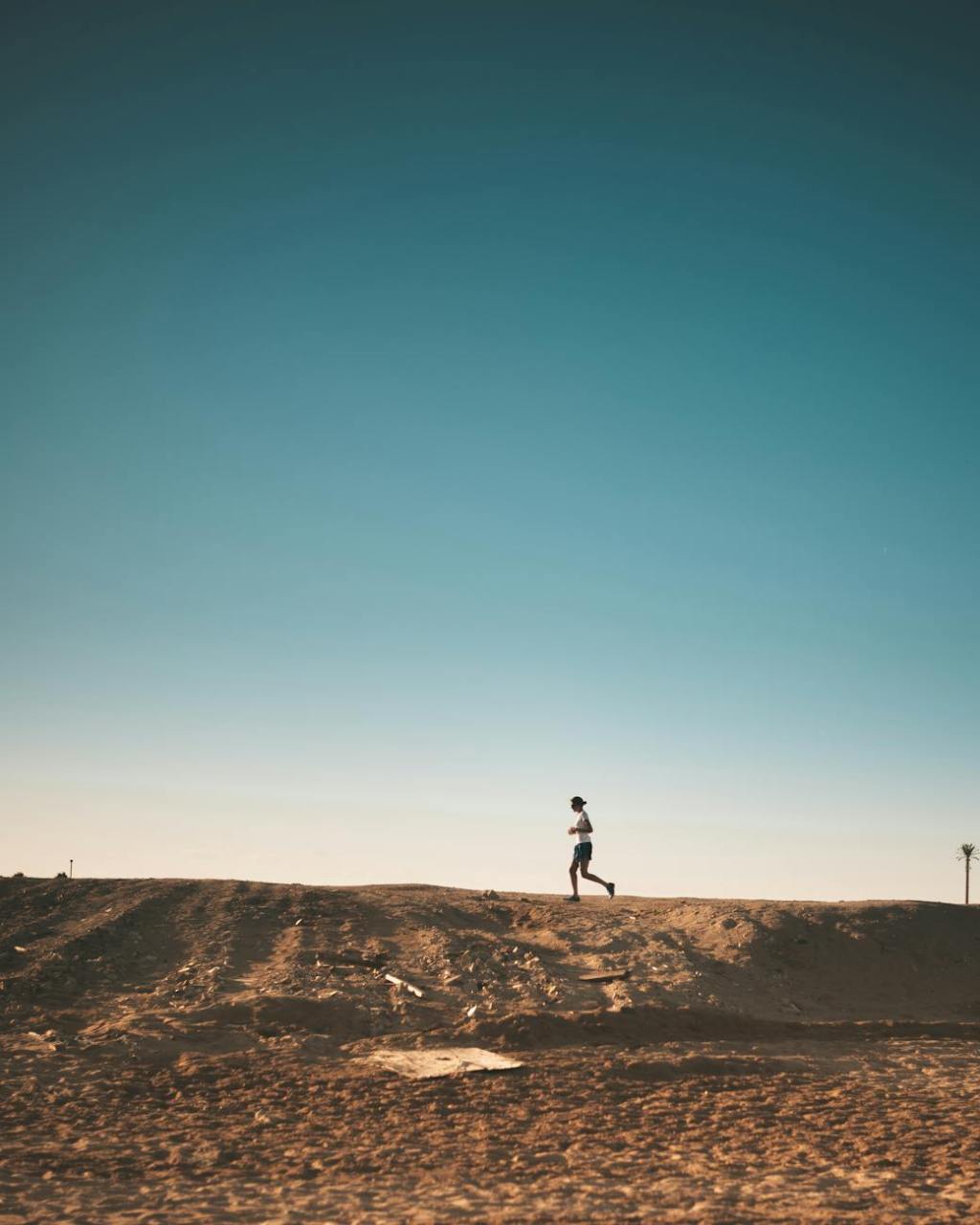The steel girder juts out high above the ravine, like a tightrope suspended between mountains. The river carves an ancient path beneath the bridge, aided by the snowmelt from our unusually mild winter. February’s sky is sleepy and thick, and its matte gray surface appears to swallow any ray of sunlight. My best friend is standing in the center of the foot-wide beam, 10 stories high and a third of the way across the structure. A cigarette rests between his nicotine-stained fingers, gently rising to meet his lips for deep, lung-filling drags. His rugged beard is spread like ivy from the top of his cheek bones to the middle of his neck. He looks pensive, yet exhausted. I stand 100 feet away, paralyzed with fear that he’ll jump.
Of course, he won’t. Ten minutes prior, he promised he’d be safe, that he wants to live, that he was just going for a walk—but the pit viper of paranoia in my stomach won’t stop striking. Of course, I know he won’t jump. I’m sure of it. But the wind may push him, or he might stub his toe, and his balance is not guaranteed.
I stand along the edge of the beam, where the steel meets dirt, and take my first step. The wind slams against my shoulder and shoves me forward. I should be there with him. Yet, as the semi-trucks rumble overhead, they shake the structure and decimate my confidence. We’ve driven this bridge so many times: trips to see family in New Jersey and Philadelphia, holidays with grandparents, time with my cousins. I take a second step: no railing, no tether, no safety net. The beam’s linear structure and the pitch of the earth below me create a 45-degree angle, increasing the delta between my feet and the earth. Every step induces anguish and walking over the oval holes in the beam fills me with immense dread. He knows how to do this; he knows how to silence his fear. I don’t. My seams are starting to separate.
His mother just died from a layer cake of cancers, each attacking her body with its own brand of destruction. I was there with him at the funeral, remembering the woman who gave him life and a vision for this world. And now, at 19 years old, he’ll have to face a new vision of the world without her. I was also there six years earlier when she was diagnosed—when we were just kids—desperate to make sense of girls, puberty, and social circles. And I was there four years earlier too, when everything was perfectly normal. She’d take us to a nearby lake and we’d swim for hours, jumping from the dock and digging for clay beneath the sandy patch of shoreline. We’d shape the clay into all sorts of objects and dimple the sides by pressing our thumbs into the surface. Once we were happy with our creations, we’d carry our shapes home and bake them in the oven with her until they were firm. I remember her face throughout those days—the good days, that is—and how safe we always felt with her.
Heel, toe, heel, toe. This is the world’s most terrifying sobriety test. Each step pulls the ground farther away from my eyes. I’m intent on following after him, no matter what it takes. At her funeral, I promised myself I’d be there for him, wherever “there” happened to be. In his room, at the bar, in the middle of a twelve-inch-wide steel beam standing over a ravine—I’d be there. He’s broken for the moment, but not shattered. He only knows perseverance. She was so tough, and in turn, it made him tough. I, however, am not tough—not at this moment, at least. Right now, I’m a mound of melting cookie dough on this beam.
My mind is racing and I can feel my feet physically rebelling against the queues they are being given. Delicate steps shift to an old man’s shuffle. Fear has a way of increasing our gravity, making us heavier, and pulling us toward a surface. Please don’t sneeze or cough. Both are acute possibilities. The bile in my stomach rises like mercury on a hot day and climbs into my throat. The taste is horrid. I look up at my best friend and extend my arms out sideways for added balance. He appears to be staring at a cluster of particles before him. Something in his view has been disassembled and he’s trying to reconnect its parts through concentration alone. I’m barely breathing at this height, terrified that one wrong move will send me plummeting into the abyss below. He, however, is attempting to manage telepathy with emptiness itself. I watch him lower the cigarette as white smoke pours from his lungs. He’s not of this world, I think. At least not at this moment. Fear has left his body.
Each step amplifies the number of bones I’ll break if I fall. I’ve yet to reach the death zone but it’s quickly approaching. Twenty feet high equals broken legs. Three or four steps forward and we’re adding in a cracked pelvis. Around thirty-five feet high, we’re talking about a broken back and a severe head injury. A few feet more and death pokes its head in. Regardless of the height, any fall ends with a calamitous thud before I go rolling like a tumbleweed into the frigid water below.
He didn’t ask me to walk out here with him. Technically, he may want to be alone and I’m screwing up his afternoon. “I am just going for a walk,” he said. We have done some crazy things before, but this I can barely handle. The next few steps are a flurry of confusion as to why I’m following him. I tell myself I must be there for him. If his world is crumbling at this moment, shouldn’t my shoulder be ready to bear his weight? But he doesn’t need me, and I’m not strong enough to bear my own weight, let alone his. He needs time and reflection. My childishness and sense of loyalty blind me, so I continue walking toward him in the last throes of effort. But when I reach a height nearing 40 feet, my amygdala starts shutting down biological functions. My knees lock up, my heart rate spikes, and my feet screech to a halt. For the first time in my life, I’m drowning in a wave of pure terror. I must sit down this very second and clutch whatever surface I can find. Nothing will be okay until I sit down. I bend my knees into an awkward squat and slowly lower myself until my hands grasp the sides of the cold steel. The knobby rivets dig into my palms as I look down toward the river. My friend continues walking slowly, step by step, toward the center of the bridge. I watch him stride with his arms crossed, as if he were casually listening to a lecture. If he falls, he dies—but to him, this isn’t a thought. “I’m just going for a walk,” he told me.
I sit and wait, watching as he nears the centerline of the bridge. He calmly walks the curved beam, which slopes downward toward the concrete pile. He’s patient and careful. I watch as his feet find the concrete and I finally exhale as he approaches the hook ladder that climbs to a secure catwalk and onwards to the parapet above. I see his hands grasping the first rung and finally feel like we’ll make it home tonight, sleeping in our own beds and waking up to hot coffee tomorrow morning. I slowly twist my midsection and lift one leg over the beam to begin turning around. Halfway through the pivot, my legs sit side-by-side and dangle over the edge like a child resting on a kitchen counter. I stare down at certain death, then look up to see my best friend sauntering across the catwalk above as if he’s out for a Sunday stroll. And in him, I see life, certain in the same way as death, but more immediate and filled with promise. He will conquer his pain. He will manage to survive this loss. He will use it to make something beautiful of his remaining days. I swing my leg back over the beam and begin the slow process of scooting back toward solid ground. It’s far from graceful, but eventually I stand and walk the remainder of the beam back to the abutment. When my feet touch the earth, I sit down and wait for him. He went for his walk and now he’ll be okay.





Leave a comment